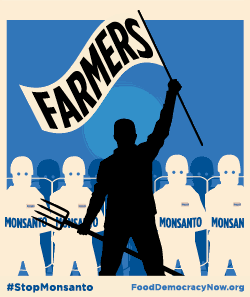The questionable ethics of U.S. businesses operating outside the U.S.

 .
.
Decades of toxic emissions have robbed the nearby mountains of vegetation
i took a calculated risk while teaching my class this past weekend... i showed them the film "the corporation..." besides presenting some little-known facts about the evolution of the corporate form of business structure, the film also offers a stark and unflattering perspective of the many ethical abuses transnational corporations engage in daily, with a particular focus on their operations outside of the u.s... in a stroke of timeliness, this la times article in today's edition about doe run's smelting operation in la oroya, peru, caught my eye and i thought it would make the basis for a good post...
some years ago i had the opportunity to visit the high mountains of peru and more recently spent some time in the andean altiplano in argentina, so i've had a brief but first-hand glimpse of the vast and breathtaking beauty of that part of the world... i never saw an environmentally damaged andean area, but i have seen other, similar areas in the u.s. rocky mountains, in mexico, and in the balkans of s.e. europe...
some key points from the article illustrate the dilemma often faced by the citizens of the communities in which transnational corporations do business...
and, as in so many other underdeveloped and emerging economies throughout the world, the citizens of la oroya are faced with an unfair choice - earning a living or maintaining their health...
- On the twisting streets of the Old Town [La Oroya Antigua], air laced with sulfur dioxide spewing from the smokestack irritates the eyes, befouls the mouth and stings the lungs. Fine dust coats furniture and clothes, residents say.
- In 2006, the Blacksmith Institute, a New York-based environmental advocacy group, named La Oroya among the world's 10 most-polluted places, a list that includes Chernobyl, Ukraine.
- In children, a [blood-lead reading of] 10 micrograms a deciliter, is considered elevated by the World Health Organization and the U.S. Centers for Disease Control and Prevention. Officials at Doe Run acknowledge that almost every child tested in the Old Town has a blood-lead reading at least double that level.
- A St. Louis University research team said La Oroya faces a "daily toxic cocktail" and labeled the situation "an environmental health crisis."
- Doe Run officials say emissions are down and have never been shown to have harmed anyone. "I am not aware of any case of serious illness that may be attributed to our La Oroya operations," said spokesman Victor Andres Belaunde. Critics say Doe Run's repeated threats to shutter the plant and leave more than 3,000 employees jobless have intimidated Peru's government.
- [M]any residents support the plant because it drives the economy. "The smelter is needed here," said Rocio Guadalupe Mejia, 31, a mother of two who heads a community group backed by Doe Run. "There would be no La Oroya without the smelter." Many here work for Doe Run, live in Doe Run-supplied housing and send their young to Doe Run-supported schools. The company logo and its green-and white colors are seen on buildings, lunch boxes and billboards.
 .
.
(L) Men and women scrub down a street in La Oroya to wash away lead and other contaminants spewed from the smelter.
(R) Crispin Huaroc, 63, wears rubber gloves as he cleans masks used at the smelter, where he has worked for 37 years.
here's what doe run says about the la oroya operation on its la oroya web page...
The Doe Run Company acquired Metaloroya (now Doe Run Peru) in 1997 from the government-owned company, Centromin, which had operated it since 1974. Doe Run Peru operates a metallurgical complex in La Oroya, located 112 miles northeast of Lima at an altitude of 12,385 ft.
The La Oroya complex has been smelting copper since 1922 to support the Cerro de Pasco mining empire. Lead production began in 1928 and zinc production in 1952. The complex has recovered precious metals, such as gold and silver, since 1950. The complex also produces more than a dozen other by-products.
and, on the same page, here's what they say about what they're doing to help the community of la oroya...
Community Involvement
Previous operators of the La Oroya complex left a legacy of contamination which, compounded with the unstructured growth of La Oroya, has exposed its residents to environmental and health risks. Doe Run Peru is concerned with the impact the contamination has on the surrounding communities as well as the health concerns brought on by poor nutrition, lack of sanitation and clean water, and poor air quality. The company is working with local communities and government authorities to find solutions to these issues and improve the quality of life for the town’s residents.
To meet these objectives, Doe Run Peru supports the surrounding communities in implementing sustainable-development projects. The company also works extensively in the community to improve public education and healthcare infrastructure.
Doe Run Peru’s accomplishments in La Oroya over the last five years include:
* Conducting the first-ever community-wide blood lead level survey using the Centers for Disease Control protocol.
* Entering into an agreement with the Peruvian Ministry of Health, MINSA, to launch a joint effort to control blood-lead levels of 2,000 children under the age of 6 living in Old La Oroya.
* Constructing a modern medical clinic and government dining establishment that services 800 low-income individuals.
* Implementing water-collection systems in parts of La Oroya that enable treatment of storm water and sewage.
* Remodeling more than a dozen public schools, benefiting more than 2,000 students.
* Introducing a breeding program for sheep and llamas through the purchase of top-quality animals, whose offspring were donated to 12 surrounding communities. In addition, seminars were offered to 2,600 farmers covering animal husbandry and pasture improvements.
* Providing small business practices training for nearly 4,000 local women, resulting in 25 new community businesses.
* Developing a recreational center that includes soccer fields, artificial lakes, wildlife, and barbecue areas.
* Introducing a community education program to address the issue of blood lead levels in young children.
most interestingly, here's what doe run says about la oroya on its home page...
The Doe Run Company recently created a new relationship with Doe Run Peru, which has transitioned to an affiliate from a subsidiary. Both companies operate equally and independently, guided by a common vision to become global providers of premium metals and services.
note the key verbiage oh-so-innocently buried there - "transitioned to an affiliate from a subsidiary"... what does that tell you...? one, by creating doe run peru as an "affilate," doe run has built a financial liability firewall between the parent company and doe run peru... whatever financial obligations doe run peru may incur for environmental and/or health damages, doe run in st. louis will not have to dip into its corporate coffers to pay... two, by placing doe run peru in an independent "affiliate" status, it's much easier to sell...
so, in closing, who's the power and money behind doe run...?
Doe Run emerged from the old St. Joseph Lead Co., which during the Civil War purchased extensive lead deposits in Missouri. In 1994, a New York-based conglomerate, the Renco Group, acquired Doe Run. Renco's chief executive is Ira Rennert, known for his junk-bond transactions, his holdings of polluting companies and his lavish Hamptons estate.
and the renco group...?
from wikipedia...
Renco Group is a holding company controlled by Ira Rennert. It owned AM General, maker of the Hummer SUV, until a recent deal handed control to Rennert's neighbor, Ronald Perelman. Another Renco subsidiary, U.S. Magnesium, is accused of polluting the Great Salt Lake, and other Renco companies are accused of pollution in Missouri. The Renco Group owns mills and mines around the United States and in South America. Pollution problems at the company's properties have sparked public outcries, environmental lawsuits, and hundreds of millions of dollars in environmental penalties and fines.
welcome to the wonderful world of globalization...
Labels: Andes, Doe Run, globalization, La Oroya, Peru, Reno Group, transnational corporations
Submit To PropellerTweet














